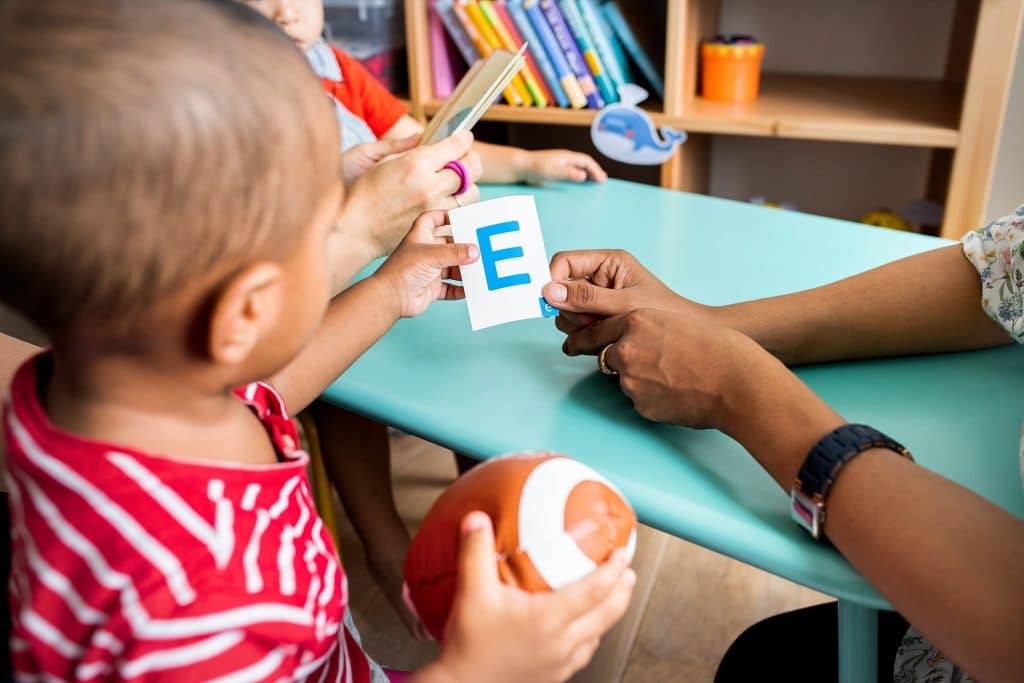There is a range of disorders, conditions, and disabilities that can affect a child or adult’s ability to effectively communicate through speaking. This struggle with traditional communication can have negative long-term consequences, but there are ways that this issue can be mitigated.
One of the most important ways to supplement this communication deficit is with AAC, which stands for Augmentative Alternative Communication. AAC is vital in helping people to communicate their needs in non-traditional, or ‘alternative’ ways.
What Is AAC?
In short, AAC simply refers to any form of alternative communication that aids a person in expressing thoughts, feelings, wants, and needs. By “alternative,” this means every form of communication not including speech or any oral communication. This can include things like writing, pictures, gestures, body language, and more.

Types Of AAC
Though AAC can cover many different forms of communication, it is usually split into two types: aided and unaided AAC.
Aided AAC
Aided AAC covers any kind of augmentative alternative communication that requires external objects or devices to help a person communicate.
These tools that help to aid AAC can be electronic or non-electronic. They include:
- Electronic: iPads, tablets, laptops, smartphones, apps, speech-generating devices, text-to-speech features
- Non-electronic: pictures, signs, photographs, writing, objects, schedules
Unaided AAC
Unaided AAC refers to augmentative alternative communication that does not require any physical aids to be performed. Instead, it relies on the human body to make these communications, which can be done via physical gestures, facial expressions, body language and movement, sign language, fingerspelling, and gaze.
Speech Generating Devices
There are plenty of speech-generating devices (SGD) that can be used to aid AAC, though their use will vary depending on the person’s needs and capabilities, as some types of AAC devices are more expensive than others. AAC devices for speech can range from inexpensive or free options like sign language, flashcards, and pictures that can be associated with specific words, questions, or actions, and single visual boards with various pictures in one area.

Other SGDs include low-tech communication devices for children, where a simple electronic board has picture buttons that generate verbal words or commands when pressed. Buttons can include single words or phrases, sentences, and questions.
More advanced SGDS are expensive high-tech communication devices with a touch-screen interface that allows the user to navigate through icons that vary from very simple words to complex phrases and responses. Some companies that produce SGDs have also developed supplementary apps for smartphones and tablets, which offer the same experience without requiring a separate device.
Who Benefits From AAC?
The purpose of AAC is to assist people with verbal communication. Thus, anyone who struggles to communicate verbally can benefit from ACC in some form. Common reasons for AAC use are simply for children who are non-verbal, have a very limited vocabulary, or rely entirely on repetitive or scripted phrases due to difficulting forming spontaneous sentences.
However, there are many disorders and medical conditions that can affect a person’s ability to communicate verbally, for which AAC can be very beneficial. These include, but are not limited to:
 Autism spectrum disorder (ASD)
Autism spectrum disorder (ASD)- Cerebral palsy
- Down syndrome
- Phonological disorders
- Childhood apraxia of speech (CAS)
- Angleman syndrome
- Aphasia
- Lou Gehrig’s disease
- Amyotrophic lateral sclerosis (ALS)
- Traumatic brain injury (TBI)
AAC and Autism
Of course, many children with autism will experience issues with verbal communication. In fact, according to the international organization Autism Speaks, as many as 40% of people with autism are non-verbal, meaning they are largely unable to communicate verbally, and may only be able to speak a limited range of words throughout their life. Even children with ASD who are verbal may still experience significant obstacles to verbal communication at some point in their lives.
While speech and language therapy is vital for children with autism who struggle with verbal communication, AAC is also an effective way to aid communication. Even for children who are verbal or semi-verbal, AAC strategies and devices are immensely helpful while they are still in the process of developing their vocabulary or confidence in speaking.
If you, your child, or a loved one is struggling with verbal communication and you want more information on augmentative alternative communication or speech and language therapy, our team at Bolling ABA can help. We offer a free consultation for families and individuals with autism and related disorders – just contact us via email or call 404.981.4105 to book today.





Recent Comments